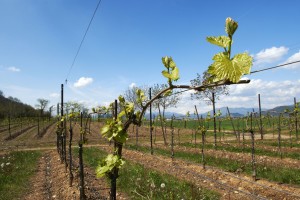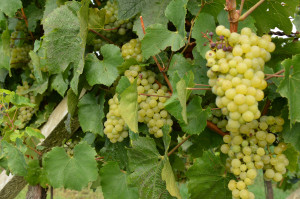It’s quite possible you have never heard of the Erbamat grape variety. Before last month, I’d never heard of it either. However…starting with the 2017 vintage, Erbamat (a white variety) will be allowed for use in the wines of the Franciacorta DOCG.
Franciacorta, as all serious wine students know, is a super-serious (read: Traditional Method) sparkling wine produced in Lombardy. The normale version requires a minimum of 18 months of lees aging; this goes up to 60 months minimum for the riserva. And the grapes are totally no-nonsense: up until now, the only grapes allowed for use in Franciacorta DOCG are Chardonnay and Pinot Noir, plus Pinot Bianco (but only up to 50%).
This will change soon, as the Italian ministry of Agriculture and the Franciacorta DOCG consortium have announced a change to the Disciplinare di Produzione that will allow the use of the Erbamat grape variety. This change should become effective with the wines of the 2017 vintage, assuming the amendment’s publication in the Gazzetta Ufficiale (Official Journal).
When the new regulation goes into effect, the Erbamat grape variety will be allowed to comprise up to 10% of a Franciacorta DOCG wine produced with Chardonnay and Pinot Noir, and up to 50% of the blend if used alongside Pinot Bianco. The grape is appreciated for its late ripening characteristic and neutral flavors, but primarily for its ability to retain high levels of malic acid, even in warm temperatures and despite its tendency to ripen late.
The Erbamat grape has been grown in the areas in and around Lombardy since at least the sixteenth century, however, it seems it has always been a minor grape variety and was in danger of becoming extinct about a generation ago. Before its recognition in the wines of Franciscorta, it was not allowed for use in any of the DOC or DOCG wines of Italy. However, it been used in some interesting blends bottled at the “vin” (table wine) level of categorization, such as the Erbamat/Trebbiano blend known as Perlì produced by the Comincioli Winery in Brescia.
Following a 1982 study in which the grape was described by Professor Attilio Scienza as”capable of producing wines of extraordinary acidity and freshness,” several producers in Franciacorta began some experimental plantings of Erbamat. The experiment, it seems, turned out well.
References/for more information:
- Robinson, Jancis, Julia Harding and José Vouillamoz: Wine Grapes. New York, 2012: Harper Collins Publishers
- http://www.franciacorta.net/en/viticulture/vines/
- http://www.cronachedigusto.it/archiviodal-05042011/325-scenari/21746-2017-03-31-14-29-35.html (in Italian)
- http://www.cronachedigusto.it/archiviodal-05042011/325-scenari/20630-consorzio-franciacorta-sesta-modifica-al-disciplinare-un-nuovo-vitigno-per-la-produzione.html (in Italian)
- http://www.comincioli.it/en/prodotto/perli-2/
Post authored by Jane A. Nickles, CSE, CWE – your blog administrator
Are you interested in being a guest blogger or a guest SWEbinar presenter for SWE? Click here for more information!


I love the way the vines not only wind themselves around their props but also wind themselves throughout history. Learning about the history of grapes and how some are used today simply fascinates me and awakens the nostalgic senses. Thanks for a great article.
Pingback: Where the Grape Grow - Climate Change and Colored Pens
Pingback: Episode 106: Girls Gone Grape! - Wine Two Five